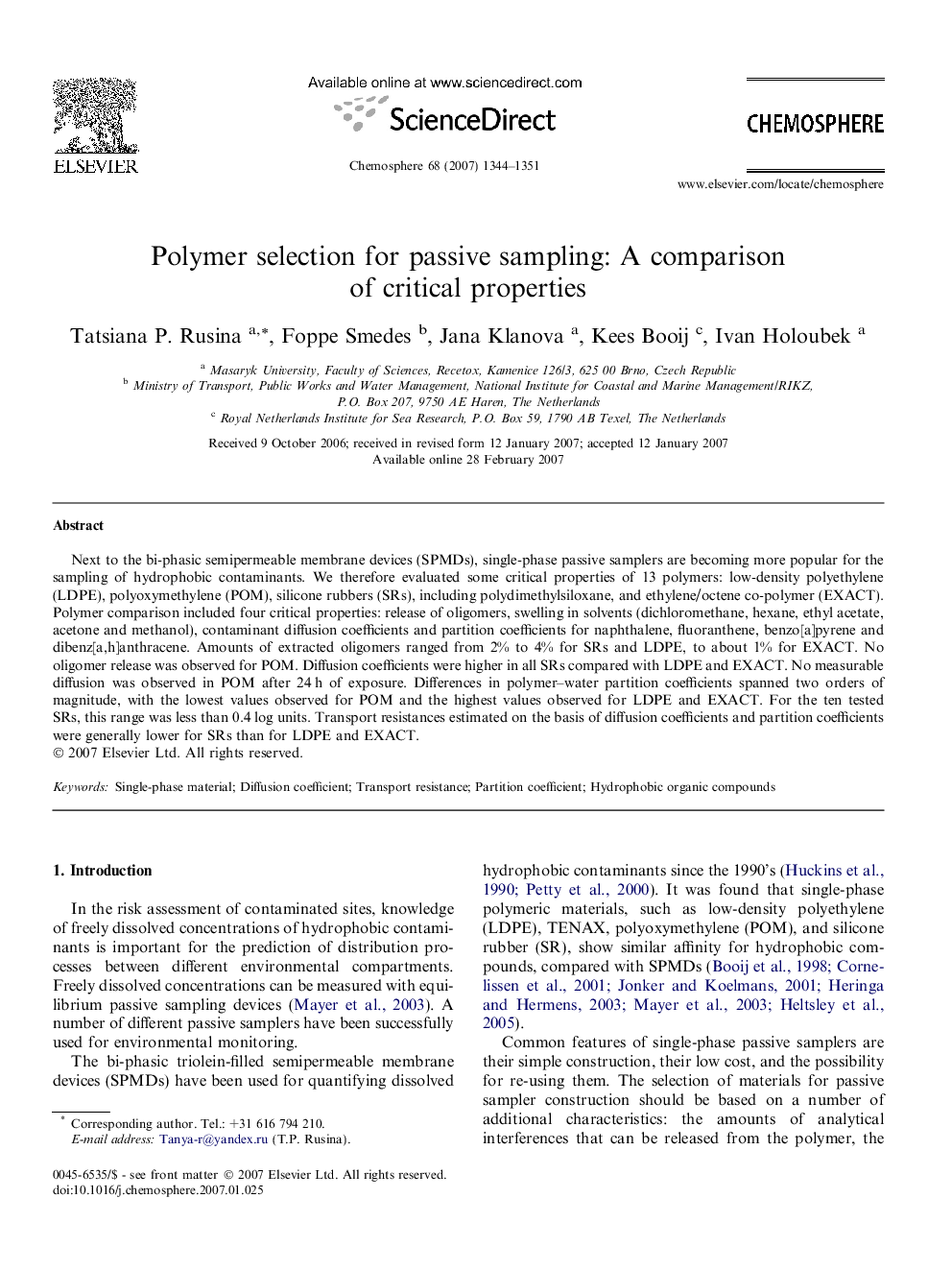| Article ID | Journal | Published Year | Pages | File Type |
|---|---|---|---|---|
| 4414969 | Chemosphere | 2007 | 8 Pages |
Next to the bi-phasic semipermeable membrane devices (SPMDs), single-phase passive samplers are becoming more popular for the sampling of hydrophobic contaminants. We therefore evaluated some critical properties of 13 polymers: low-density polyethylene (LDPE), polyoxymethylene (POM), silicone rubbers (SRs), including polydimethylsiloxane, and ethylene/octene co-polymer (EXACT). Polymer comparison included four critical properties: release of oligomers, swelling in solvents (dichloromethane, hexane, ethyl acetate, acetone and methanol), contaminant diffusion coefficients and partition coefficients for naphthalene, fluoranthene, benzo[a]pyrene and dibenz[a,h]anthracene. Amounts of extracted oligomers ranged from 2% to 4% for SRs and LDPE, to about 1% for EXACT. No oligomer release was observed for POM. Diffusion coefficients were higher in all SRs compared with LDPE and EXACT. No measurable diffusion was observed in POM after 24 h of exposure. Differences in polymer–water partition coefficients spanned two orders of magnitude, with the lowest values observed for POM and the highest values observed for LDPE and EXACT. For the ten tested SRs, this range was less than 0.4 log units. Transport resistances estimated on the basis of diffusion coefficients and partition coefficients were generally lower for SRs than for LDPE and EXACT.
